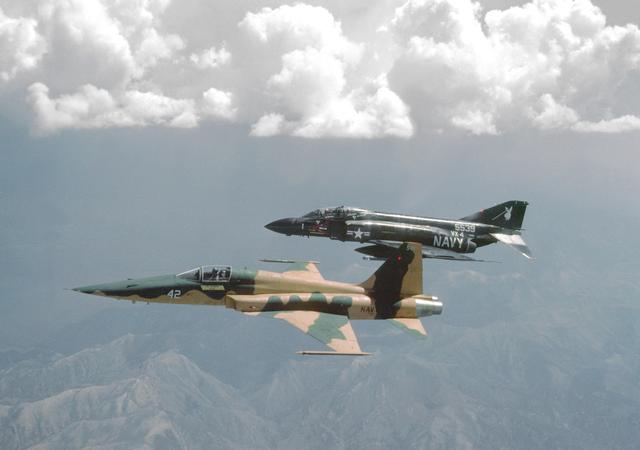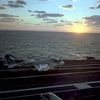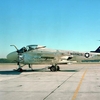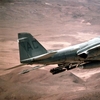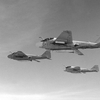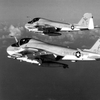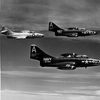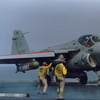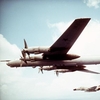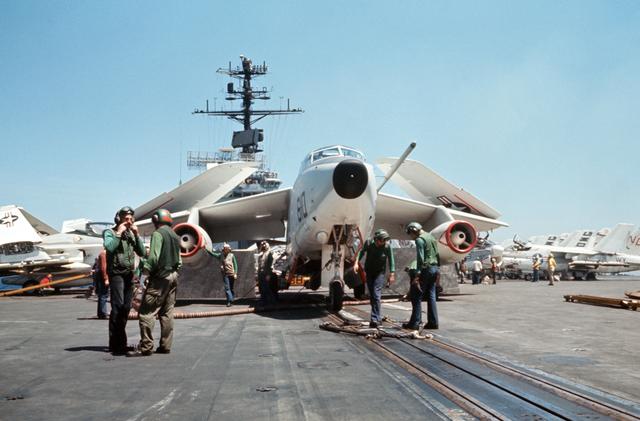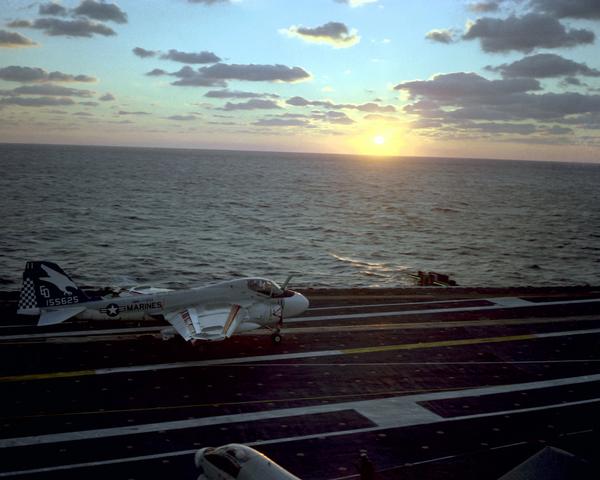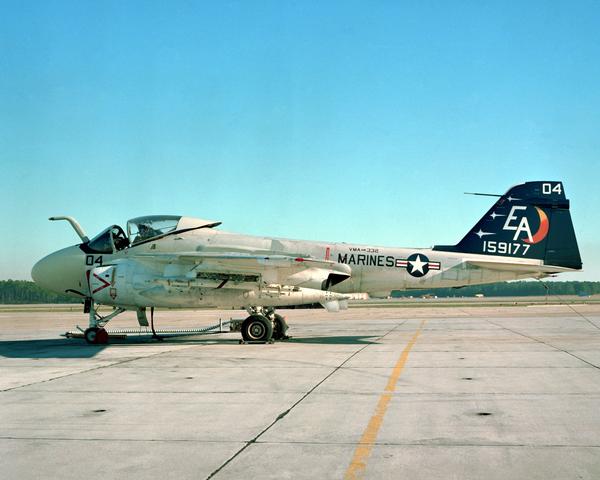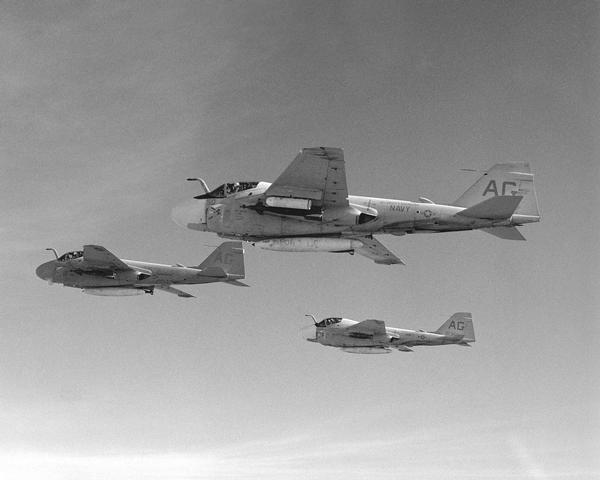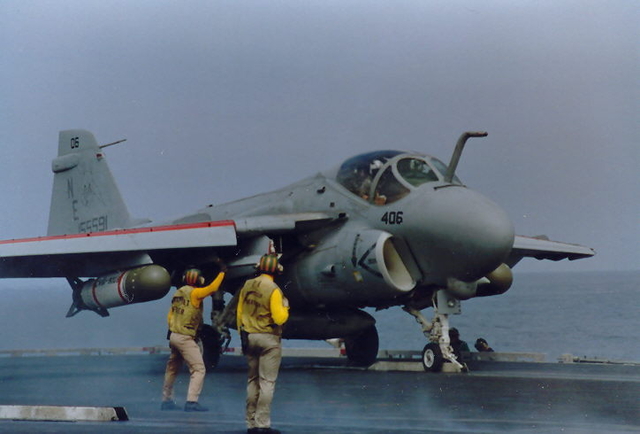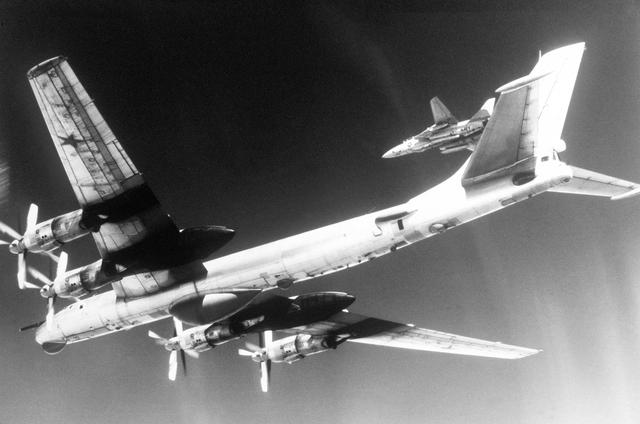-
Content count
458 -
Joined
-
Last visited
Content Type
Profiles
Forums
Calendar
Gallery
Downloads
Store
Everything posted by Southernap
-
To load up a full MER on the inner stations (2 and 4) of any of the A-6 variants (A-6A, A-6B, A-6C, A-6E, and even the proposed A-6F, and A-6G) you had to remove the main landing gear doors. On most USN aircraft ths was not done for a number of reasons the primary being maintenance issues regarding having to re-rig the main landing gear doors. Which requires a jack job to swing the gear and trying to achieve that on an aircraft carrier is a serious pain in the arse. Some USMC aircraft did this the end of the Vietnam war when they were shore based, however it was not the norm rather a requirement to achieve maxium bomb load against NVA targets in South Vietnam, Laos, and Cambodia.
-
The cobra manuver is strictly an airshow manuver. There is no advantage in using it in modern combat. When some of the more modern air to air missiles have enlarged seeker cones and improved manuverability to combat 4th generation fighters
-

Us Navy F111B?
Southernap replied to Stratos's topic in Thirdwire: Strike Fighters 1 Series - Mods/Skinning Discussion
Charlie Lima, The long range shore base naval bomber with in the US Navy died with the P6M Seamaster program. It was realized that it could be done cheaper, faster, quicker by either carrier based aviation or by the oncoming Polaris missile system. To give the Navy credit though it really worked hard to make the last seaplane work about 8 years after the concept was proven to be obsolete. -

For those looking for the ultimate Christmas accessory
Southernap posted a topic in Military and General Aviation
A F-101C cockpit for sale on Ebay, only 2200 dollars. -

F15 spawning bug
Southernap replied to Luiz Carlos's topic in Thirdwire: Strike Fighters 1 Series - General Discussion
Is this the Stock F-15 or is it an add-on F-15 -

No Weaps in WOE
Southernap replied to Viper6's topic in Thirdwire: Strike Fighters 1 Series - General Discussion
What do you mean there are no weapons? Are you saying that not even the basic weapons which come with the game? Or are you haveing problems with one of the weapons packs? -

A-6's DIANE
Southernap replied to hide86's topic in Thirdwire: Strike Fighters 1 Series - Mods/Skinning Discussion
It is actually pretty easy to dive bomb in the A-6 both in the game and in real life. The biggest thing to remember is that you want to start up pretty high about 12k altitude or better and you want to be up at that altitude around 10nm to the target. When you are at 3nm from the target flick out your speed brakes, throttle back to around 80% thrust, and pitch it over at a -45 degree angle dive. The general rule of thumb (at least in the game from what I have observed) is that for every 3k of feet dropped in altitude you will lose one nm (1nm) of range to the target. At around 5k you should pickle off your bombs and begin your pull up just before 4.5k about the ground. Any thing lower and you will be impacting the deck. You should immediatly flick in your speed brakes, throttle up to 100%, and flight straight and level for a couple of minutes before climbing back up to a prefered altitude to keep every peasent with a rifle from sniping at you. Just for a reference during the interwar and world war tow the US Navy and Marine Corps aircrew that flew SBD's, SB2U's, BT-1's, and BFC's routinely practiced dive bombing that would be around the -70 degree mark. No one not even the Japanese or Germans came close to diving like that. They also praticed a drop from around 15k and a pull up from around 5k, with them usually in a straight and level flight around 1k to 500 ft off the deck. The TK series of sims have avionics limitations that prevent a full service DIANE from being used in the A-6. So even Razbam's A-6 uses some visual trickery to make it look like a function attack suite. If one really looks at it DIANE in the A-6A wasn't all that it was cracked up to be. The basics of it was this. In the nose of the airplane there was two separate radars. One radar for search and navigation. Then just below that was a radar strictly for tracking a target. The search radar, APQ-92, would provide the basic guidance to B/N. Once they got close enough the B/N could find the target he would designate it with a cursor and use the tracking radar, APQ-112 to provide final range and bearing to the target. All of this would be fed to to the AYK-10 attack computer (the heart of DIANE). Also feeding data was the ASN-31 inertial navigation system (a basic gyroscope affecting electrical voltages style), the APN-141 radar altimeter, and finally the APN-153 radar Doppler navigation system. The Rad alt would tell DIANE how high the aircraft was, mean while the APN-153 radar Doppler used four radar beams to tell what the drift of the aircraft was. That information feed in along with present position from the ASN-31 again in the AYK-10. The computer would then also take input from what was weapon was selected and then computer the best ballistic arc to impact the target. This would all be presented on the pilot's side in his Vertical Display Indicator (aka VDI). The VDI would basically display a "road in the sky" projection of were the pilot was suppose to steer. It would also represent hills and valley with large black or white spots on the display. The target would be a 1.5in square on the display that the pilot would have to fly to. Once the B/N "armed" the jet and made the pickle hot, the pilot would straighten up and push the trigger to commit all the data inputs into the computer. From that point the computer would do the count down and then fire off the weapons. If the computer failed the fire the weapons then the pilot could still "visually" bomb by looking at the count down line off to the right hand of the display. This count down line would tick off the range and once it crossed the target again the pilot could push the trigger and the bombs would fall off and should be on the proper ballistic arc to hit the target. The limitations and failings of the initial version of DIANE was this, the AYK-10 bombing computer was in six separate pieces and it was the biggest system to fail first. Its was built by IBM and its hard drive looked like two Folgers coffee cans strapped on top of each other, with magnetic tape wrapped around them. IBM in their finite wisdom fit a pair of spindles about the size of a standard number two pencil at each end, and then fit 6 different magnetic heads to dance on it. There were three heads to write data and three heads to pick off data. The magnetic heads looked very much like something from a lie detector. It usually happened at least once during violent maneuvering the HD could become unhooked from its spindles and one of the in-flight trouble shooting measures as listed in the flight manual was to give it a couple of swift kicks from either the left or right side boot of the B/N. The other major component to fail routinely was the ASN-31 INS system. The biggest reason was that the gyros were not properly designed to handle the stresses of carrier aviation. They would on an average last about two catapult shots before dumping and not being able to input any data into the system. At which the B/N would have to dead reckon the postion from that point on. The final two major difficulties with the initial DIANE system was the independent search and track radars. Both of these were built by the Hughes aircraft company and for some reason only known to the designers they were only one (1) frequency band off from each other and to add on to that the track radar's servos (the little things use to drive the radar back and for) were very susceptible to a power surge and would short out jamming the track radar at its last postion and be useless until the antenna array was replaced by maintenance personnel. When the A-6E arrived on the scene in 1973 it replaced the AYK-10 with an improved bombing computer that used a chip similar to the 8088, some onboard EPROMs, and some onboard RAM in three boxes to do what the six seperate pieces did. The INS system was replaced with a better one that was better suited for a carrier-borne enviroment, and finally the APQ-92 and APQ-112 were combined into one array the APQ-148 (and later the APQ-156 with moving target indicator). However, the A-6E arrived to late to be used over Vietnam and wouldn't get its test until operations over Lebanon, Nicuragua, Grenada, Libya, and Iraq. -

Sept 2008 Patch Weapons Issue and Findings Thread
Southernap replied to The_Editor's topic in Thirdwire: Strike Fighters 1 Series - General Discussion
I noticed this issue a few days a go and during some testing with the MF A-7E in WoE against a rail bridge. I found out that I had to give the Walleye and even the LGB's some time to "lock-on". You will need to fly something close to a straight and level flight profile and watch the crosshairs. After they finish pulsing and the center square becomes as small as possible around your target (as in the case of the Maverick and the Walleye) or as soon as the Pave Spike crosshairs comes across target and steadys up then you will need to release the weapon. I also believe that TK cut the max range one can launch some of the guided air to ground weapons to be more realistic. In that unless you had immediate line of sight of both the weapon and the target the weapon would immediately go dumb and just drop like rock. That almost makes me believe that it is time to start testing and modding to see if we can create datalink pods like what is used for the AGM-130, AGM-62, AGM-84E and some of the other long range glide bombs. -

Westland Wyvern available?
Southernap replied to Stratos's topic in Thirdwire: Strike Fighters 1 Series - General Discussion
Actually what killed the Skyshark wasn't political B.S. rather the engine they had slated to use with it. That was the Allison T-40 engine program. The Allision T-40 wasn't a very successful turboprop engine and it has some very nasty habits. They were used in the R3Y Tradewind amphibian and series of crashes related to the high failure rate of the engine, including one that killed about hundred midshipmen returning from summer cruises in 1954 or 55. The Navy killed the engine program. The T-40 was also supposed to be used in the XFV-1, XFY-1, XF84H, P5Y Patrol plane, X-18. -

VX-4 F-4J In Playboy Bunny with F-5E of VF-43 over Pt. Mugu
Southernap posted a gallery image in Member's Albums
From the album Southern Air Pirate's Pics
-
-

VQ-2 EA-3B Whale Waiting at a catapult onboard a US Navy air
Southernap posted a gallery image in Member's Albums
From the album Southern Air Pirate's Pics
-

A-6E of VMA-533 onboard USS Eisenhower in the North Atlantic
Southernap posted a gallery image in Member's Albums
From the album Southern Air Pirate's Pics
-

A-6A of VMA-332 on the ramp at MCAS Cherry Point
Southernap posted a gallery image in Member's Albums
From the album Southern Air Pirate's Pics
-

A-6E of VA-75 rolling into bomb a target at NAS Fallon circa
Southernap posted a gallery image in Member's Albums
From the album Southern Air Pirate's Pics
-

VA-65 loaded with LGB's and 2.75in rocket pods over NAF
Southernap posted a gallery image in Member's Albums
From the album Southern Air Pirate's Pics
-
From the album Southern Air Pirate's Pics
-
From the album Southern Air Pirate's Pics
The Tu-126 was the USSR's answer to the EC-121 Warning Star AEWC aircraft. These aircraft were modifed by the Tupolev from thier Tu-114 long range civilian airliner. These aircraft served with the Soviet Air Force and the Soviet Air Defense Command from their introduction in the early 60's until thier retirement in 1984. This aircraft was replaced by the A-50 Mainstay in 1985. The Tu-126 was considered a poor comparision to both the EC-121's and the E-3 Sentry. -
From the album Southern Air Pirate's Pics
-
From the album Southern Air Pirate's Pics
The R3Y-1 Tradewind was supposed to be amphibious raiding transport designed to delievery commandos or Marine raiders deep into enemy terrority to either harass them or to sieze unoccupied islands or harbors. This was an advanced amphibious aircraft at the time it used a laminar flow wing and the new turboprop engines that were then being developed near the end of the 40's and begining of the 50's. However, with the rise of carrier air power the its ability to project power at long distances and the helicopter with its vertical take off and landing capabilities, the need for a transport such as the Tradewind started to fall out of favor. The final nail in the coffin for this experimental aircraft was a series of spectaular crashes in the mid-50's all due to the high failure rate of its Allison T40 turboprop engines. -

VA-155 Silver Fox A-6E loaded down with Mk56 Aerial Mine
Southernap posted a gallery image in Member's Albums
From the album Southern Air Pirate's Pics
-

TU-95 Bear E intercepted by a USN F-4J of VF-31
Southernap posted a gallery image in Member's Albums
From the album Southern Air Pirate's Pics
The Bear-E or TU-95MR was strictly produced for the AV-MF or Soviet Naval Aviation Force. It was a photo recon bird. You can easily see the camera package as installed in the bomb bay. -
From the album Southern Air Pirate's Pics
-
From the album Southern Air Pirate's Pics
-

Underside of a TU-95D being intercepted by a F-14A
Southernap posted a gallery image in Member's Albums
From the album Southern Air Pirate's Pics

